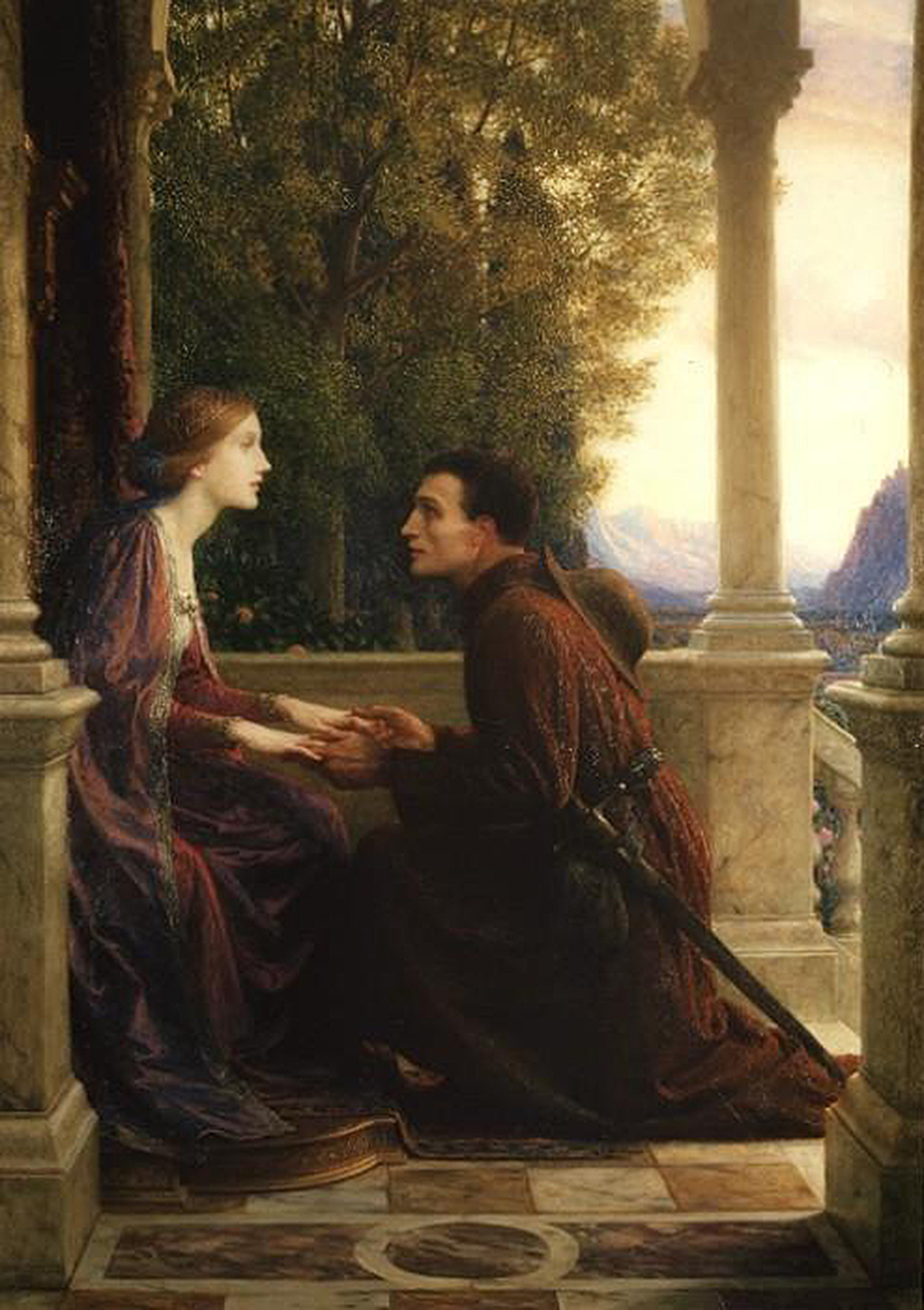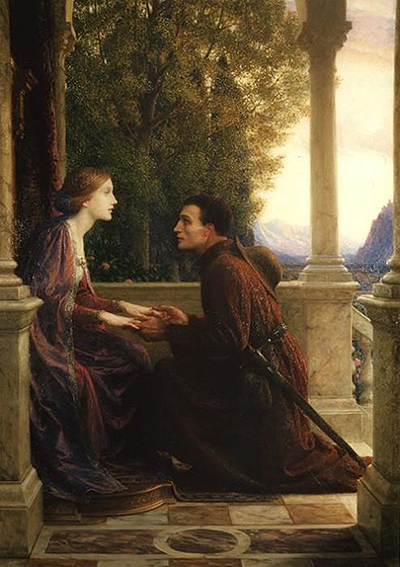Completed in 1921, The End of the Quest by Frank Dicksee is an oil on canvas painting of size 144.7 x 106.7 cm. The art contains a romantic scene of a young man and a woman both staring at each other's face.
The man holds the woman on her both hands and seems to be saying something emotional. What is not clear is whether the man is returning from foreign war all state assignment that may have kept them apart for long or he is an ex-heart-breaker who has returned after realising the value of the woman he left behind. The facial expression of the two shows a connection between them, but the despair and suffering on the young man's face show that they must have separated for a while. The woman doesn't look directly to the man's eye suggests that she may have lost hope for reunion, but her calmness shows a willingness to accept the young man's proposal.
The style used in the painting is romanticism. Romanticism as a form of art started in Europe in the eighteenth and nineteenth century as a revolt against Neoclassicism. The movement was purely a rejection of the precepts of rationality, idealisation of at the time through the disregard of the formal rules and traditional procedures in art. Romanticism gave artists the freedom of imagination and emotion in their work. Most of the romantic paintings were about nature and humans as part of nature.
The current location of the artwork is at the Leighton House Museum, London. The building was the London home of Frederic Leighton, 1st Baron Leighton. The painting was presented to the museum by Miss Mary Dicksee in 1929. Frank Dicksee may have learned painting from his father, Thomas Dicksee, who was also a painter. The father introduced Leighton and his sister to art at a young age, hence inspiring them into choosing art as a career. Leighton later joined the Royal Academy in 1870 where he learned from great painters like Sir John Everett Millais and Frederic Lord Leighton. Literary works of Shakespeare also inspired him as he interpreted the balcony scene from Romeo and Juliet. His career was successful to the point of becoming the Royal Academy's president in 1924.
Leighton House Museum is located in Holland Park, London, UK and primarily focuses on Leighton's career, though with a few artworks from others within its permanent collection. It recently loaned in Flaming June, which is perhaps his most famous painting of all, and you can also find the likes of The Death of Brunelleschi, Charles Edward Perugini, A Noble Lady of Venice, Hercules Wrestling with Death for the Body of Alcestes, Clytemnestra from the Battlements of Argos Watches for the Beacon Fires Which Are to Announce the Return of Agamemnon and Professor Giovanni Costa here, with eighty one Leighton paintings here in total. The venue itself was the former home of the artist and a visit here will really help you to better understand the man and the artist, as well as seeing specifically how he would work for a large part of his career. The End of the Quest by Frank Dicksee is therefore a fine addition to the permanent collection.





